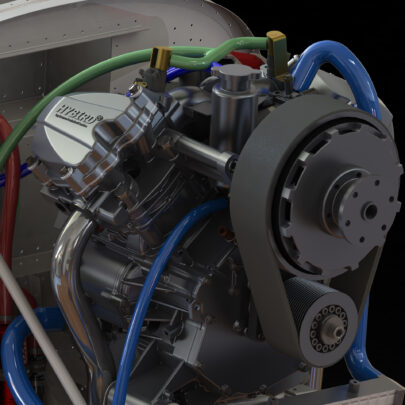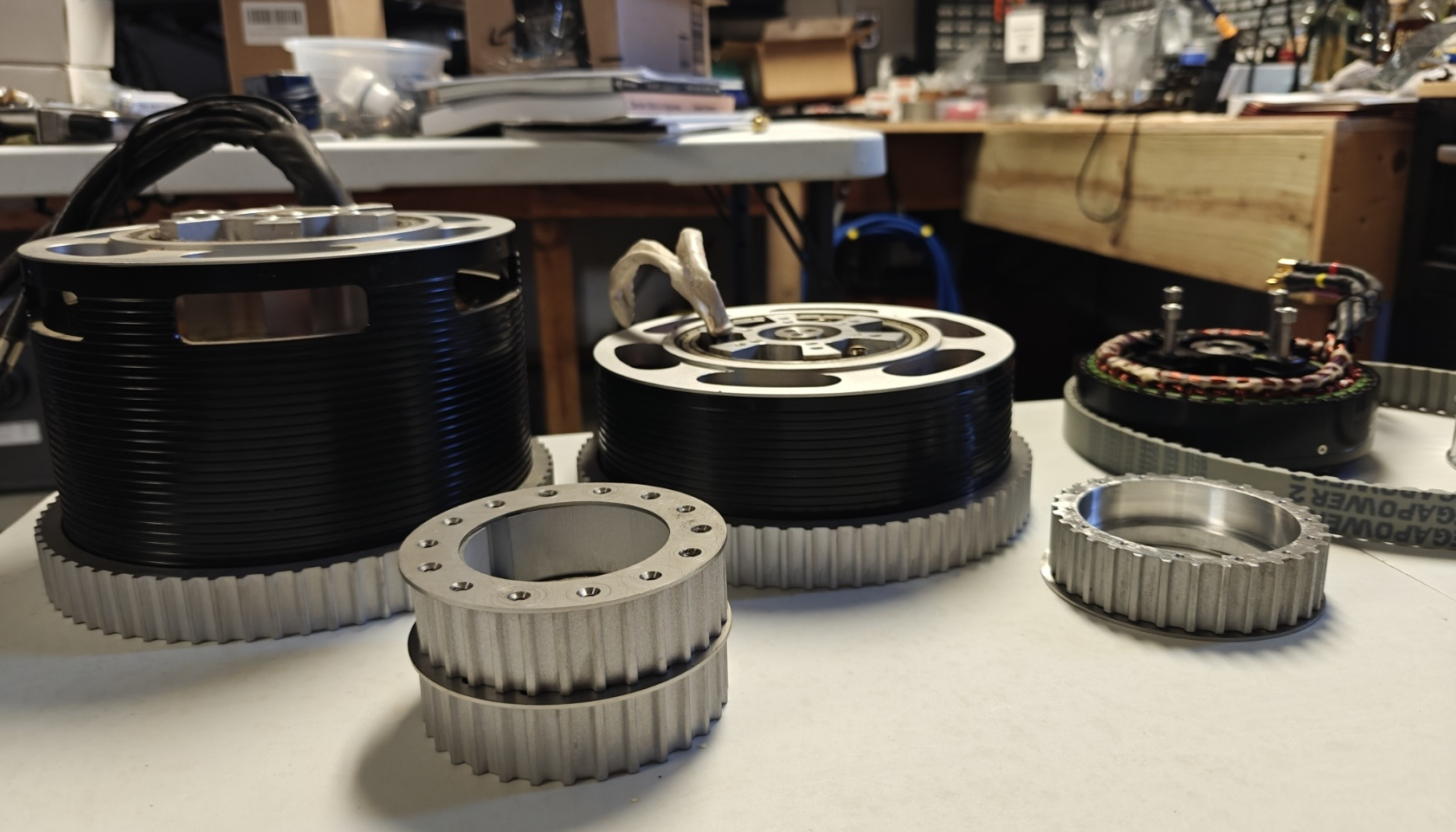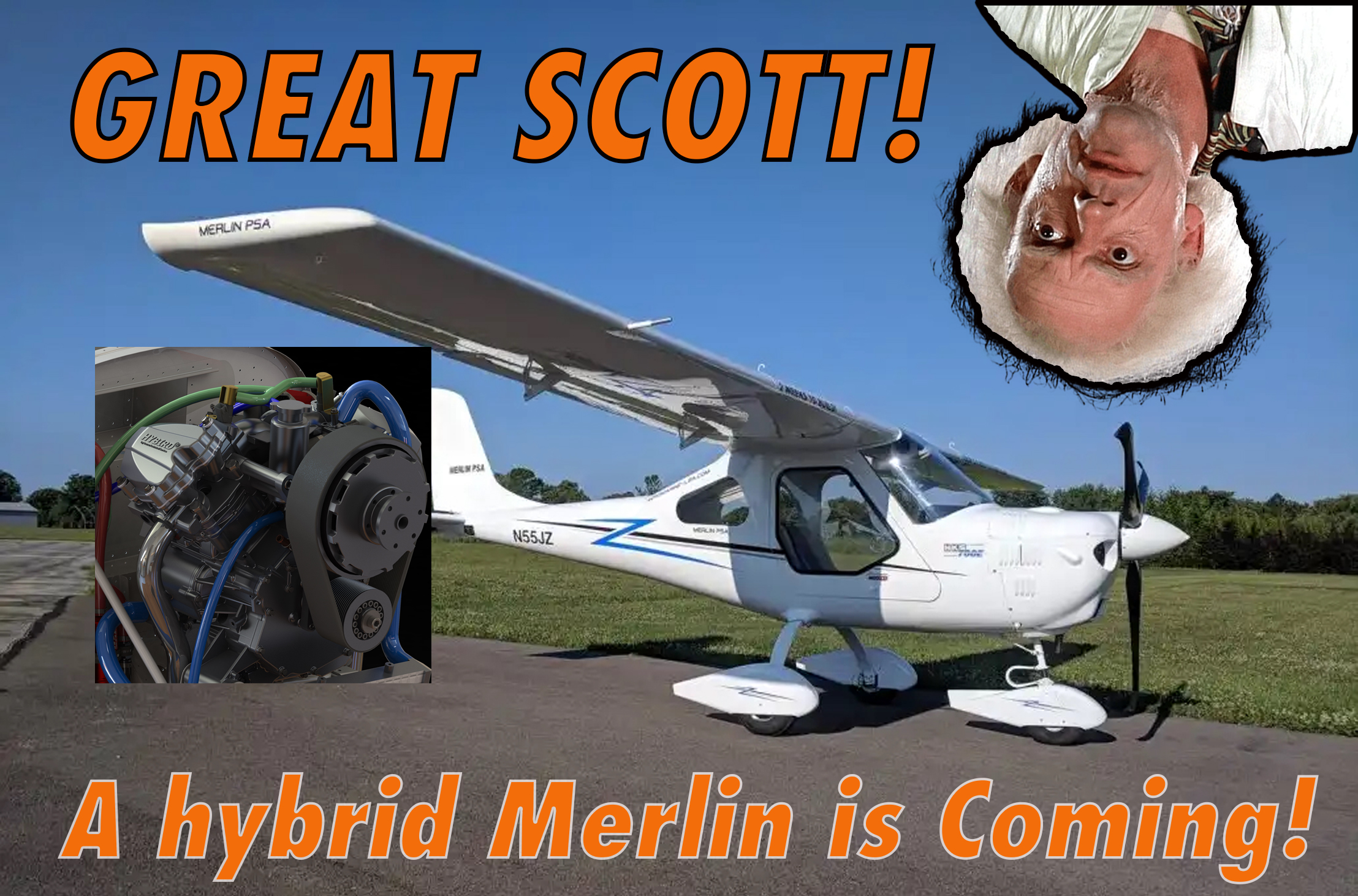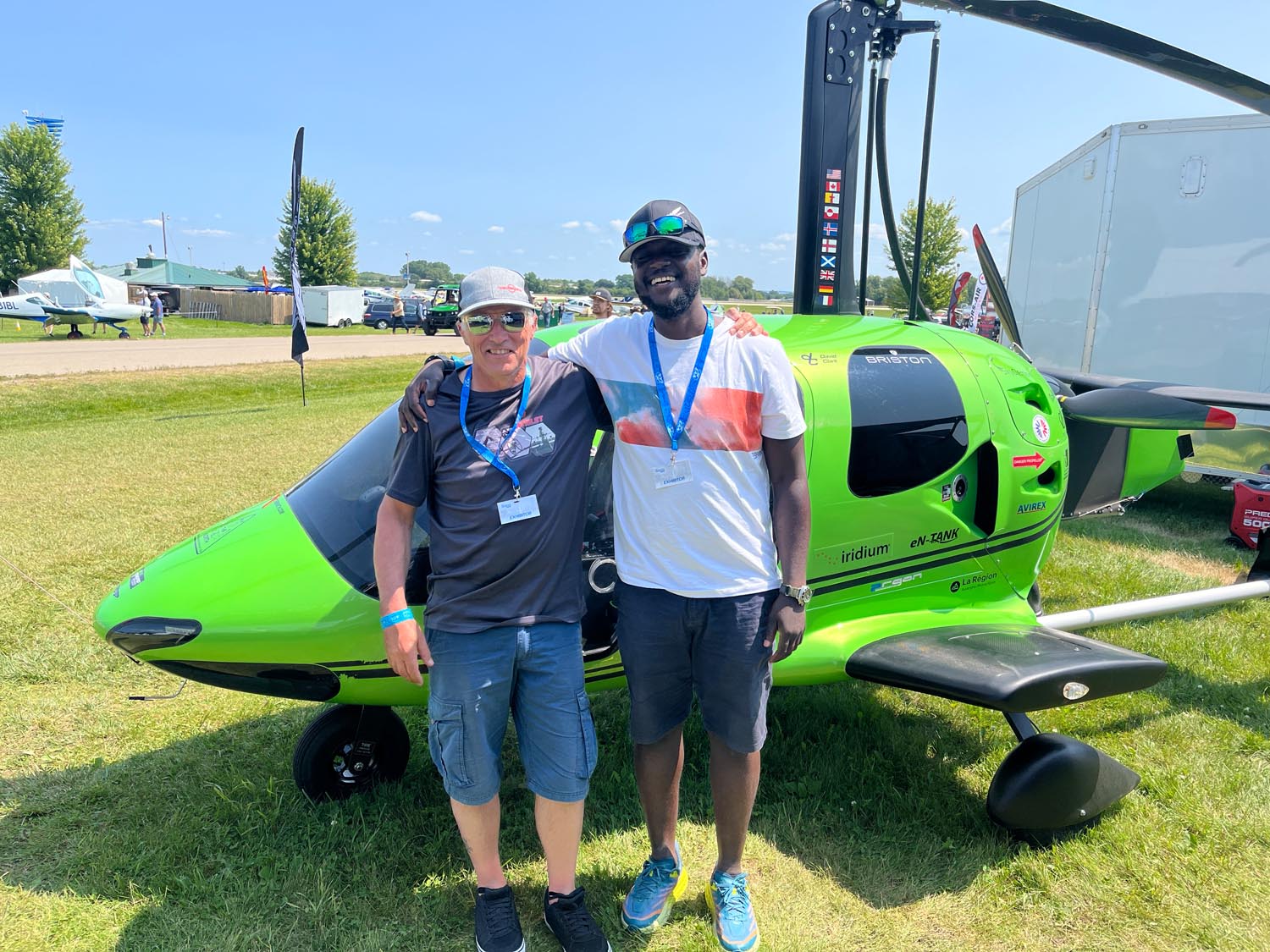
Adventurers Christophe Gonin, from La Tour, France and Lucien Angrand, from Ornex, France braved North Atlantic waters to fly from France to Oshkosh to attend the 2024 Airventure. Planning for their journey began two years ago when Christophe, a Magni Gyroplane pilot, set a goal to fly to Airventure in a two place gyroplane. First, he had to research the equipment necessary to make such a trip. He needed a gyro that had a range of at least 300 miles (for the longest over water legs) and that was reliable enough to prevent an unscheduled swim between landing sites. He settled on the Argon GTL (Grand Touring, Long) because it met all those specifications (with some modifications) and because it was long enough to accommodate their gear and survival equipment. The Argon is manufactured in Europe, with about 90 flying world wide (12 in the U.S.). The intrepid pair left France on April 15, 2024 and made a stop at the Friedrichshafen Airshow in Germany before setting out for the UK.


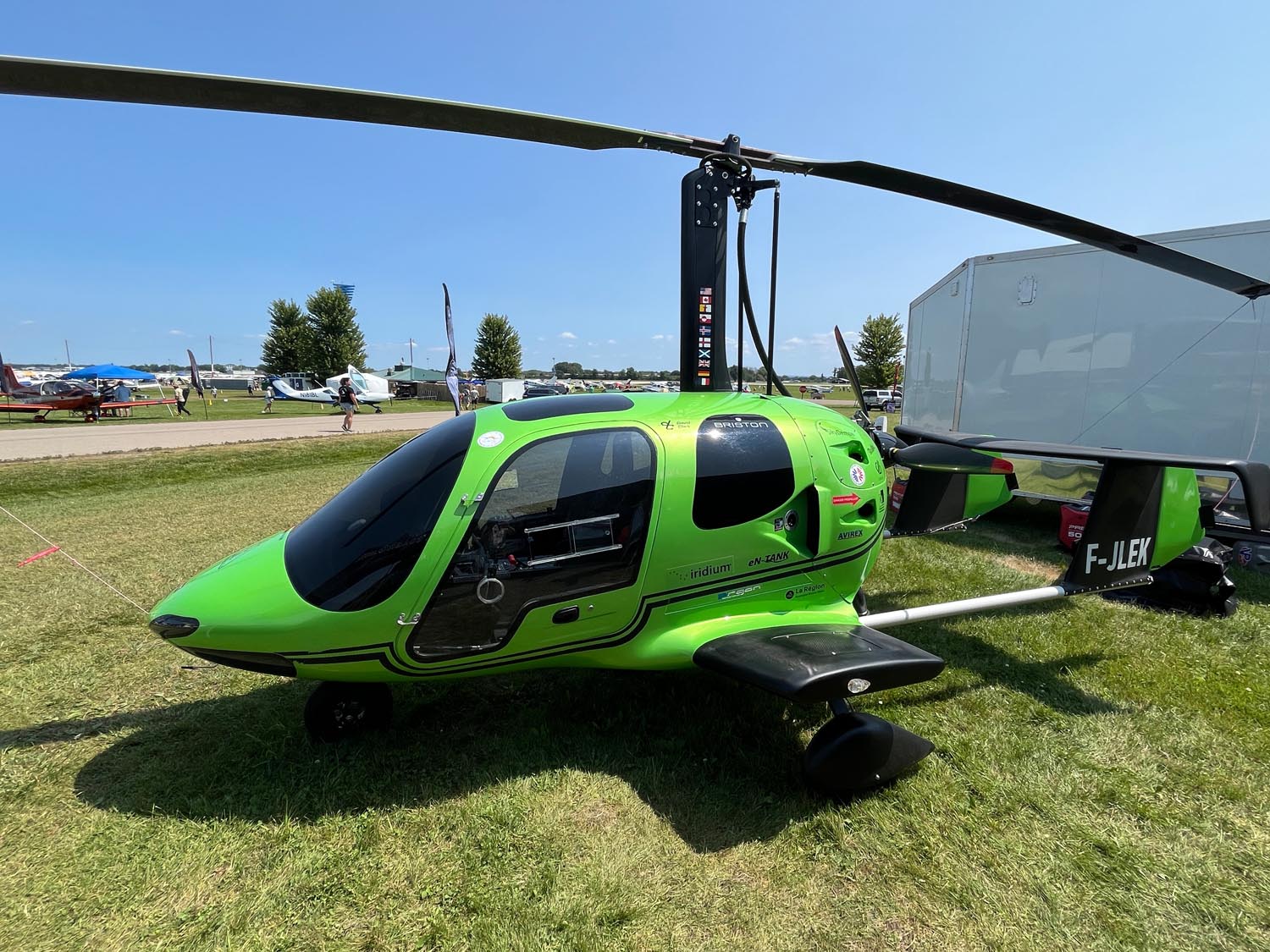
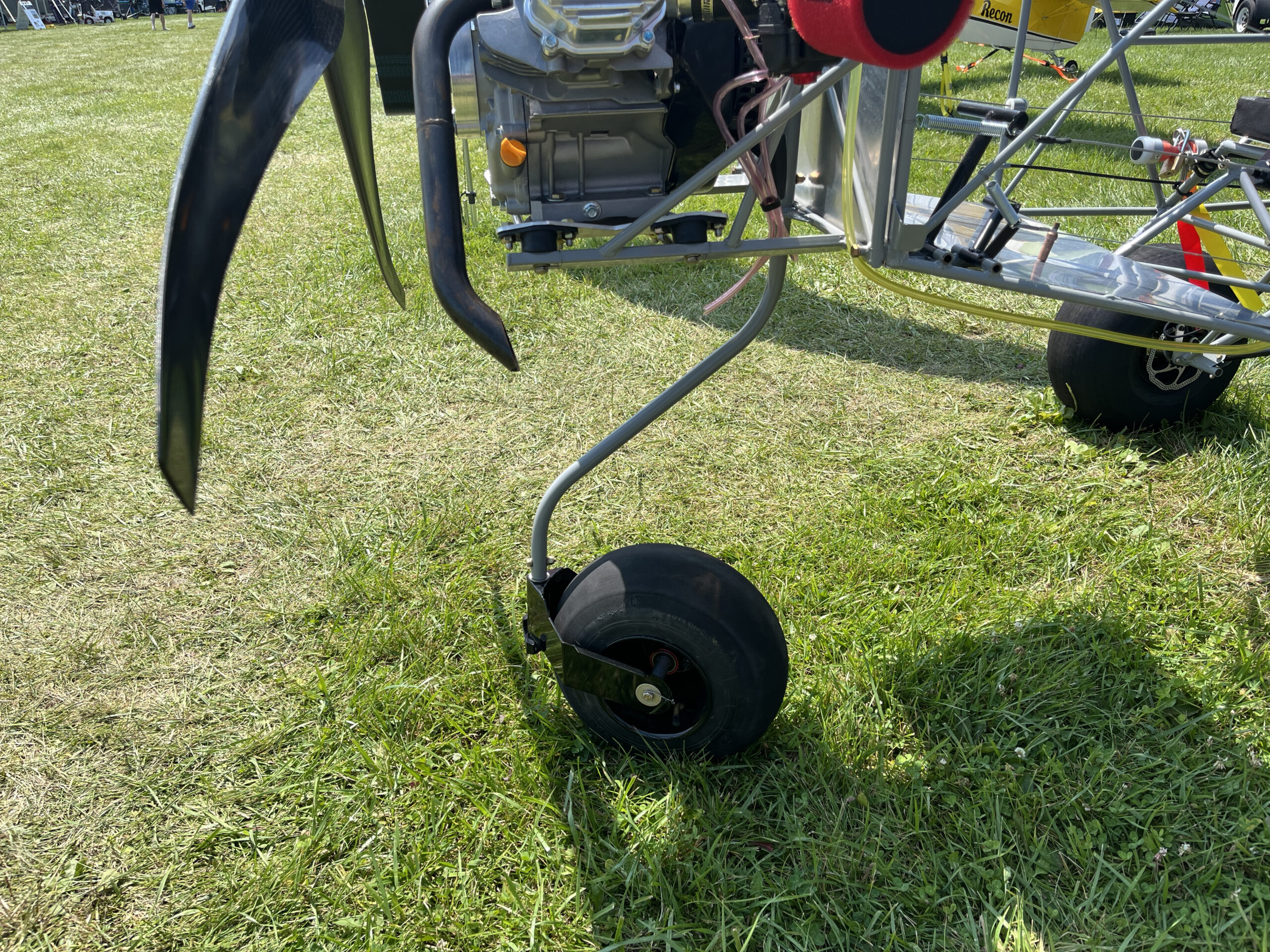 A phenom in the ultralight world, the
A phenom in the ultralight world, the 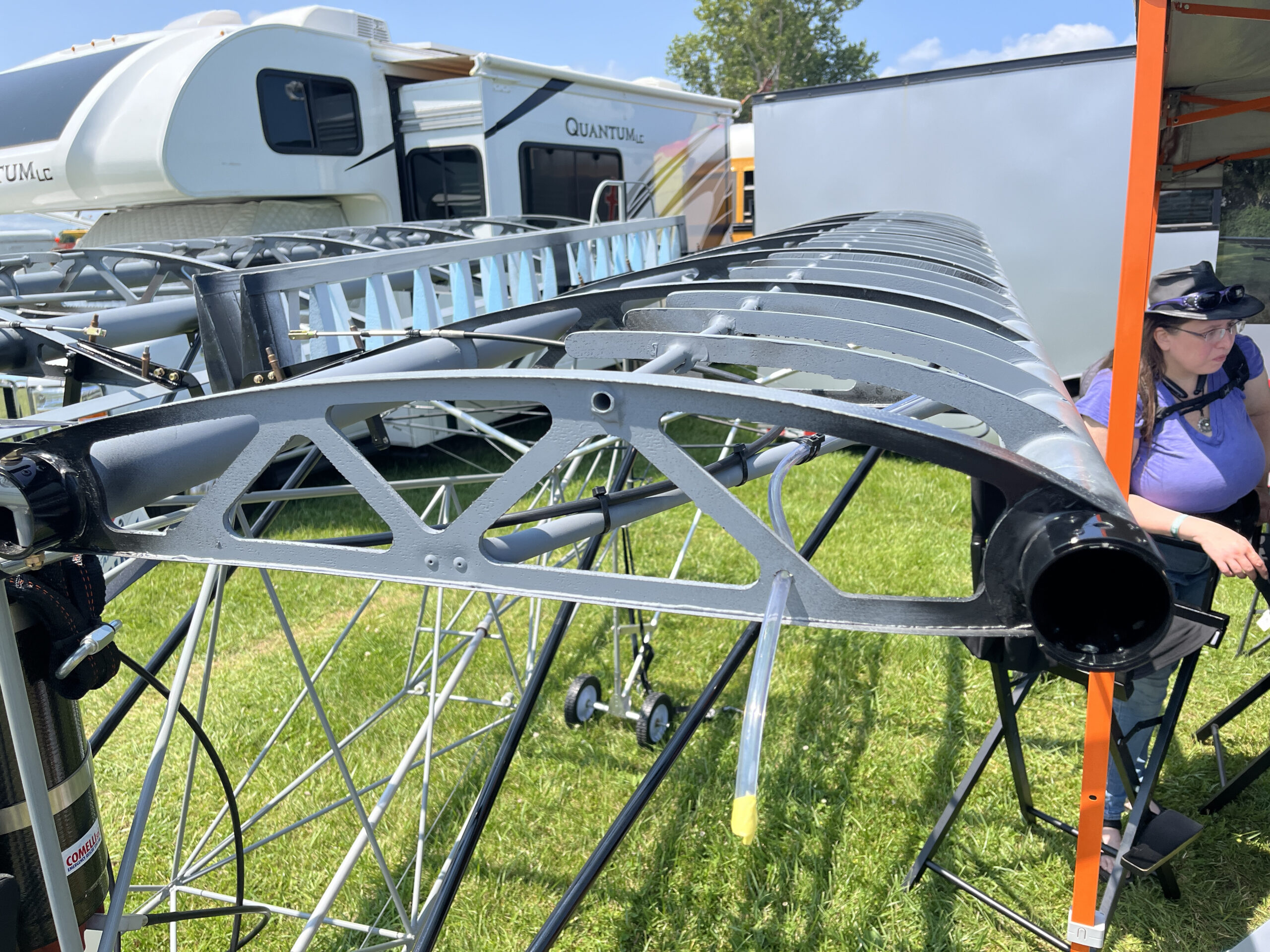 To make up for the added weight, Badland’s founder, Chris Deuel, and his team designed and fabricated light but extremely strong wing ribs using carbon fiber and high-density foam composites. The CF ribs are attached to the aluminum spars using epoxy to provide both a strong bond and isolation from the aluminum and to prevent corrosion.
The base price of the Badland ultralight is $17,000, firewall aft. The tricycle gear and carbon fiber rib upgrade will run an additional $3500. For more information,
To make up for the added weight, Badland’s founder, Chris Deuel, and his team designed and fabricated light but extremely strong wing ribs using carbon fiber and high-density foam composites. The CF ribs are attached to the aluminum spars using epoxy to provide both a strong bond and isolation from the aluminum and to prevent corrosion.
The base price of the Badland ultralight is $17,000, firewall aft. The tricycle gear and carbon fiber rib upgrade will run an additional $3500. For more information, 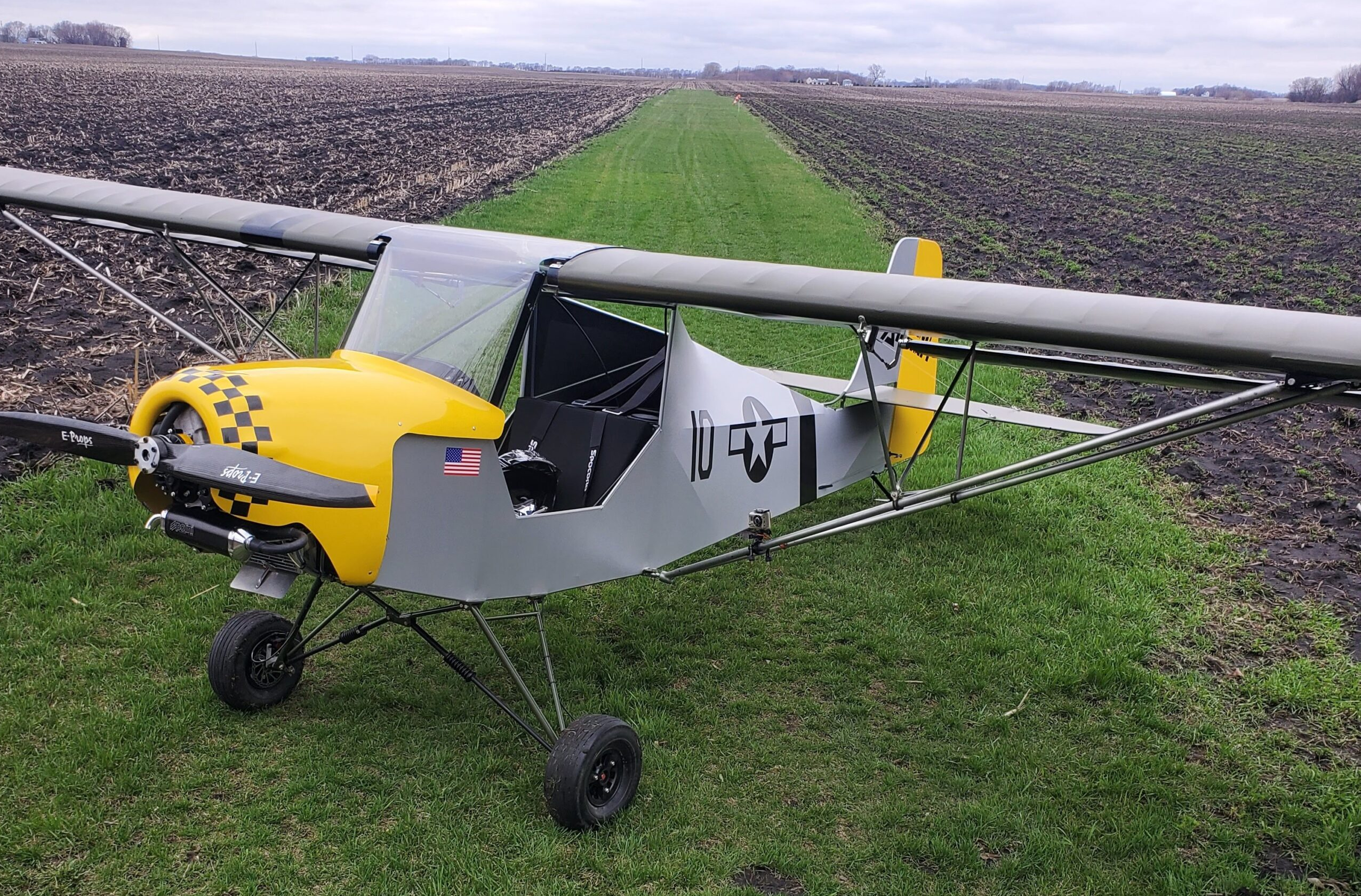 https://www.youtube.com/watch?v=0GNbXyuXVbw
https://www.youtube.com/watch?v=0GNbXyuXVbw
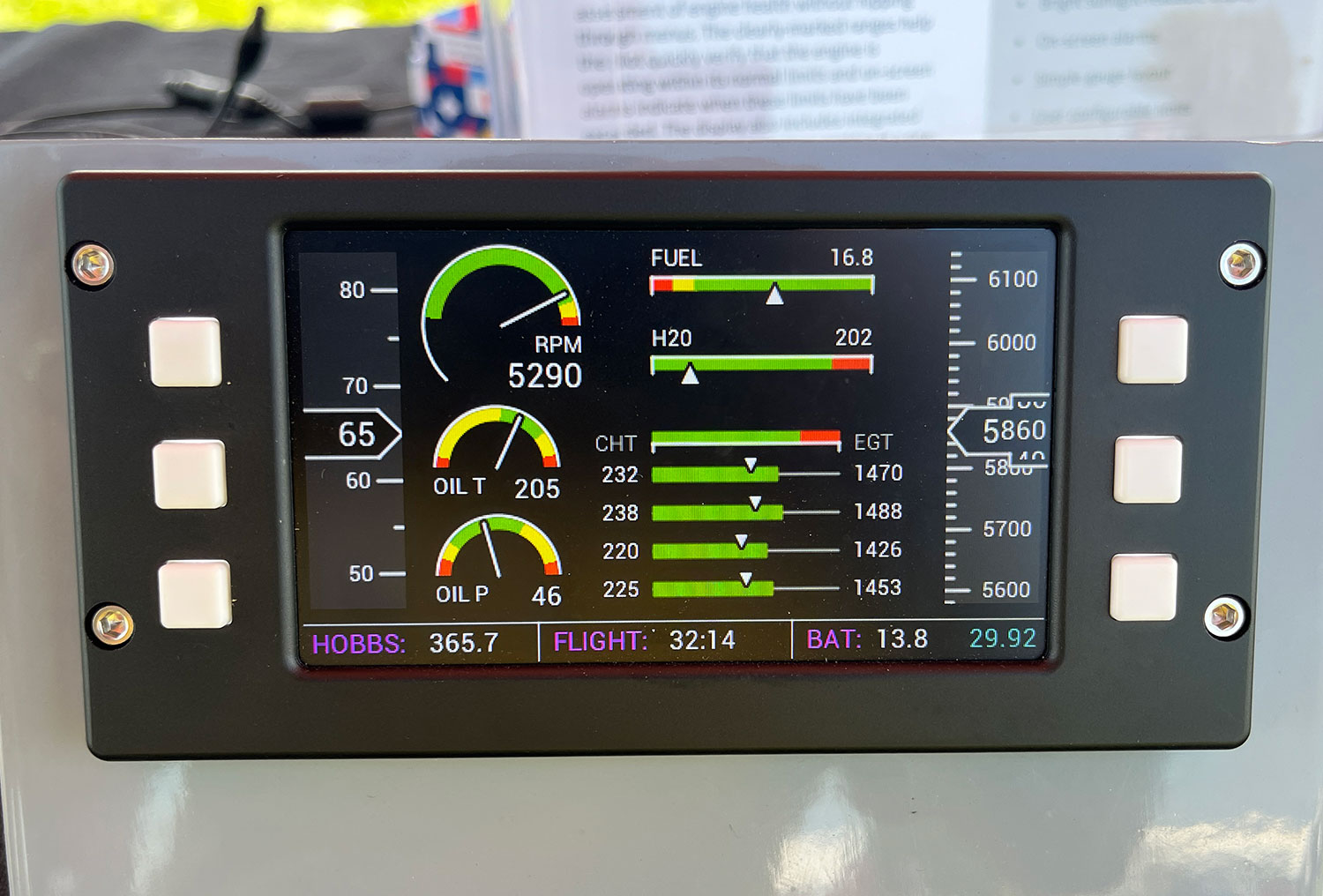 If you are piloting an ultralight or light plane VFR, you really don’t need an artificial horizon or a heading indicator. But you do need airspeed and altitude, and it’d be nice to have that available in a compact, clear, modern package. Even better, you’d like to make sure everything is happy in the power barn, as well as your airspeed and altitude.
In the spirit of providing everything you need and nothing you don’t, Wapsi Aero brought a bright and affordable electronic flight instrument that has generated quite a bit of buzz at AirVenture’s ultralight field. The rectangular instrument provides graphical engine data mid screen with airspeed and altitude in legible tape readouts on each side—combining a partial EFIS with an engine monitor. The screen is bright and easily readable, even in direct sunlight. The instrument also provides Hobbs and flight timers as well as battery voltage.
Even better, the Wapsi device is designed to fit into the same hole that may currently house a GRT EIS engine monitor—of which there have to be thousands in the field. It has the same physical footprint and the exact same connectors and pinouts. Installation appears to be just that simple: If you have a GRT EIS, swap out the unit and keep all the existing sensors. Add pitot and static lines to get airspeed and altitude. The only parameter the Wapsi units don’t currently support is fuel flow, though that’s in the works.
Wapsi currently has instruments for two-cylinder, two-stroke engines ($699), two-cylinder four-stroke engines ($749) and a four-cylinder, four-stroke application ($799). All prices are less probes; the Wapsi devices can use GRT, MGL, VDO and generic thermocouple probes. More configurations are under development. For more information, go to
If you are piloting an ultralight or light plane VFR, you really don’t need an artificial horizon or a heading indicator. But you do need airspeed and altitude, and it’d be nice to have that available in a compact, clear, modern package. Even better, you’d like to make sure everything is happy in the power barn, as well as your airspeed and altitude.
In the spirit of providing everything you need and nothing you don’t, Wapsi Aero brought a bright and affordable electronic flight instrument that has generated quite a bit of buzz at AirVenture’s ultralight field. The rectangular instrument provides graphical engine data mid screen with airspeed and altitude in legible tape readouts on each side—combining a partial EFIS with an engine monitor. The screen is bright and easily readable, even in direct sunlight. The instrument also provides Hobbs and flight timers as well as battery voltage.
Even better, the Wapsi device is designed to fit into the same hole that may currently house a GRT EIS engine monitor—of which there have to be thousands in the field. It has the same physical footprint and the exact same connectors and pinouts. Installation appears to be just that simple: If you have a GRT EIS, swap out the unit and keep all the existing sensors. Add pitot and static lines to get airspeed and altitude. The only parameter the Wapsi units don’t currently support is fuel flow, though that’s in the works.
Wapsi currently has instruments for two-cylinder, two-stroke engines ($699), two-cylinder four-stroke engines ($749) and a four-cylinder, four-stroke application ($799). All prices are less probes; the Wapsi devices can use GRT, MGL, VDO and generic thermocouple probes. More configurations are under development. For more information, go to 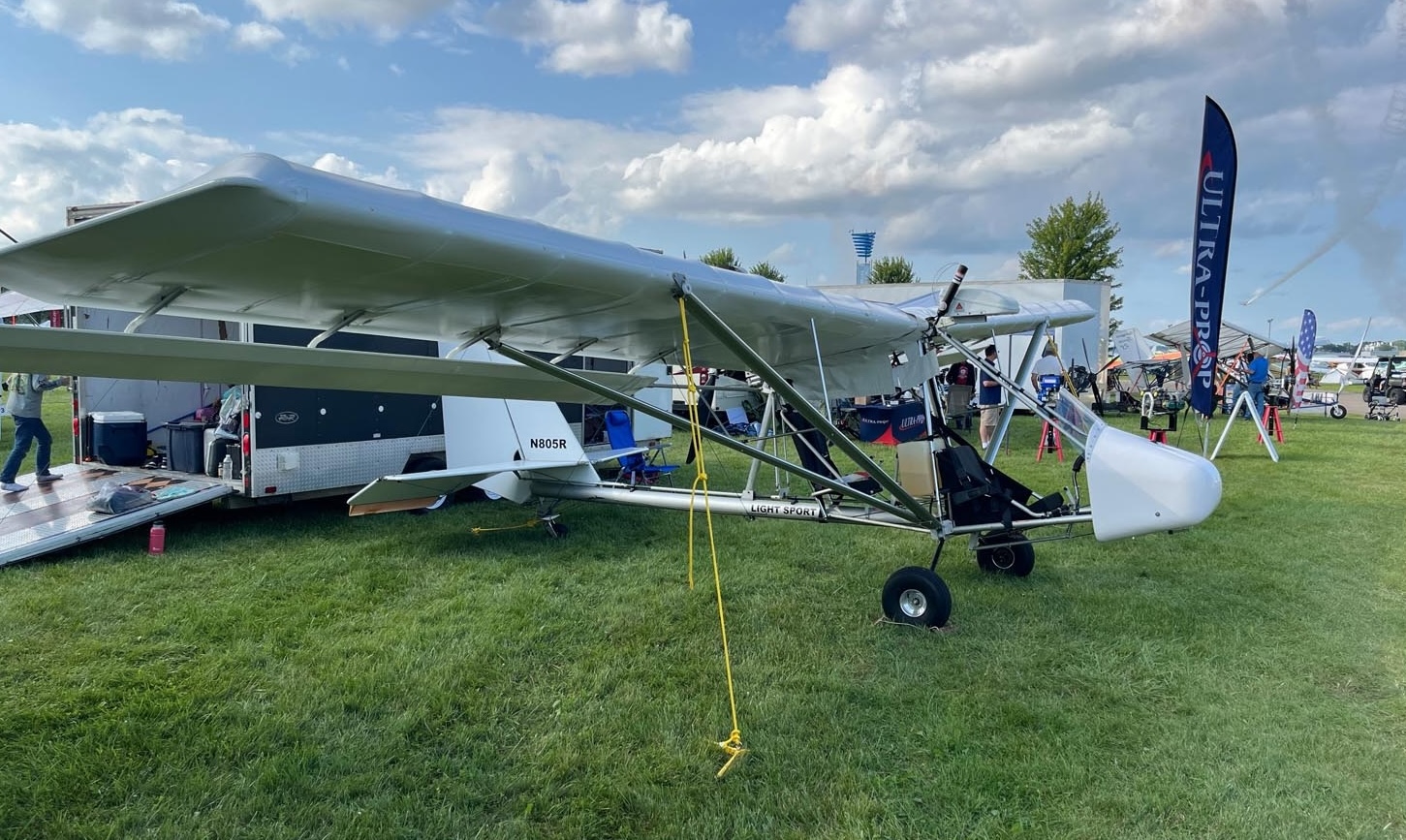
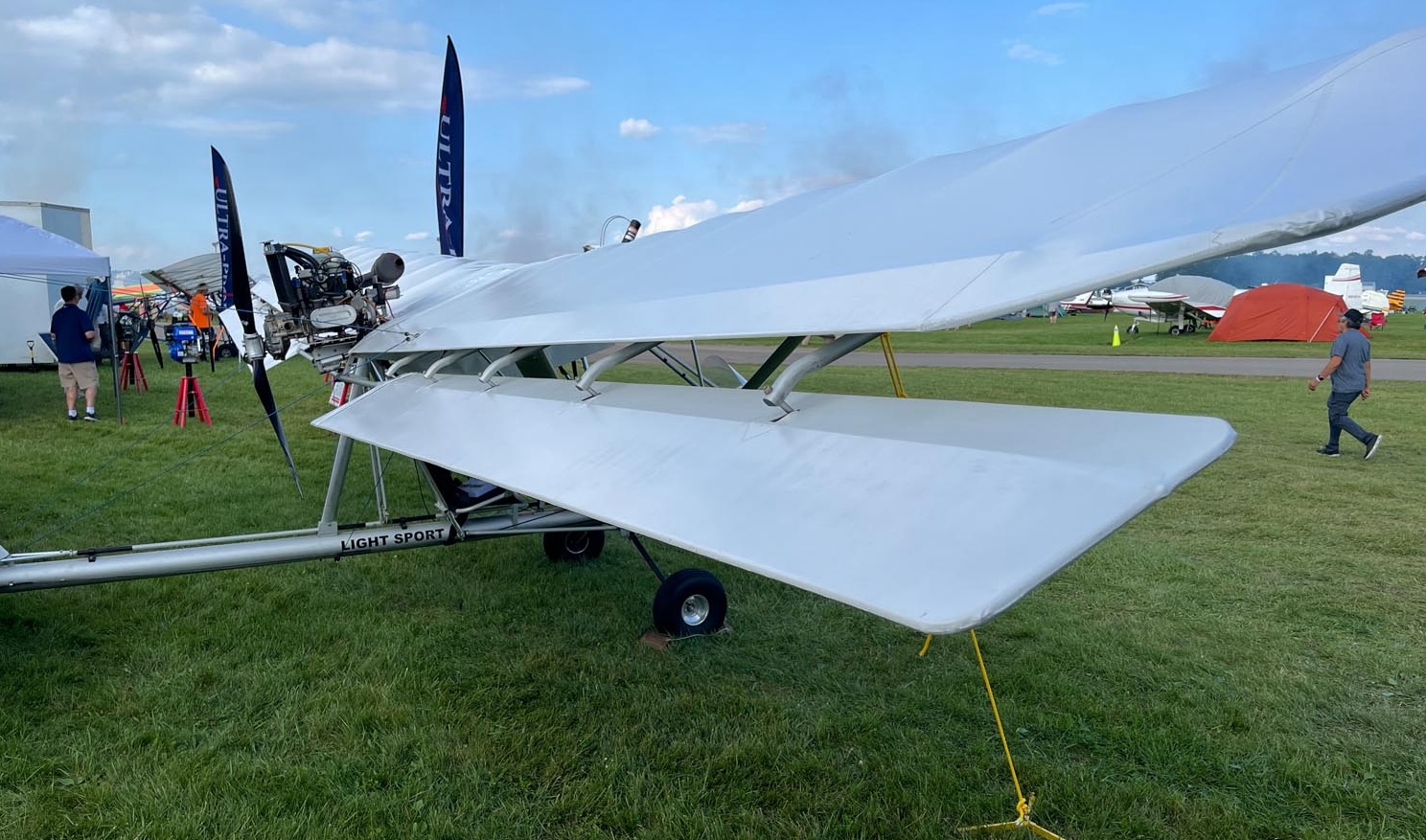
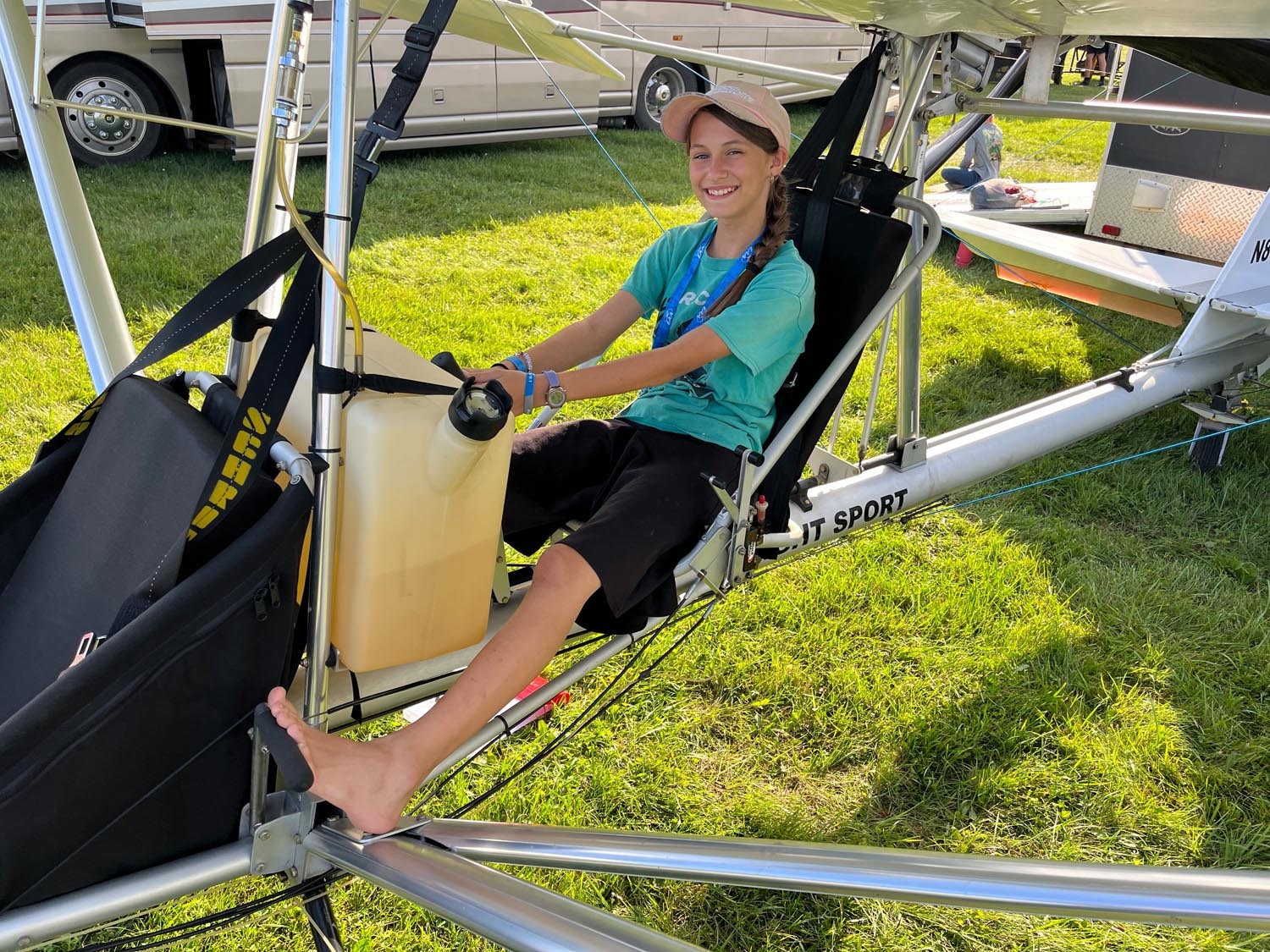
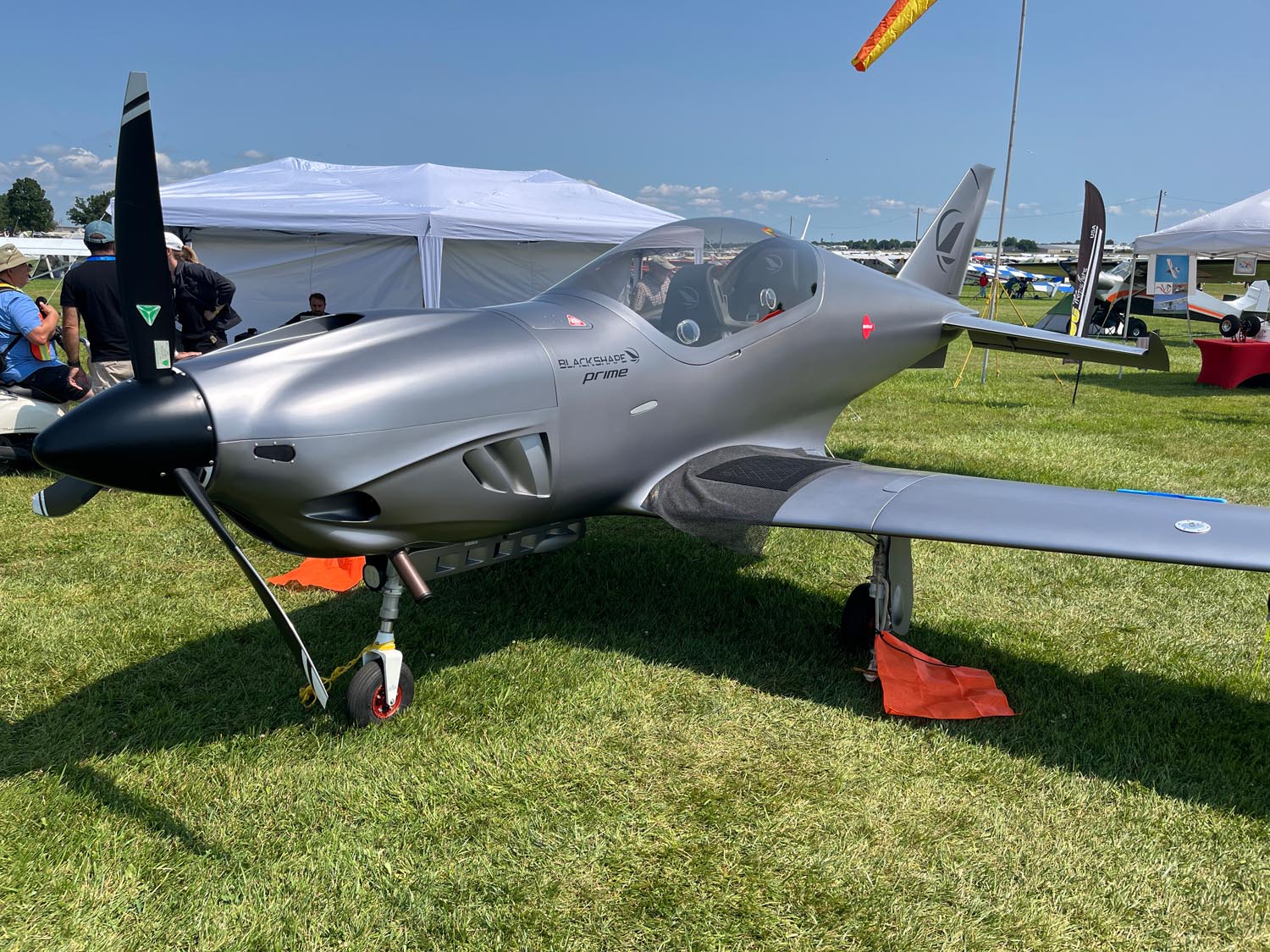
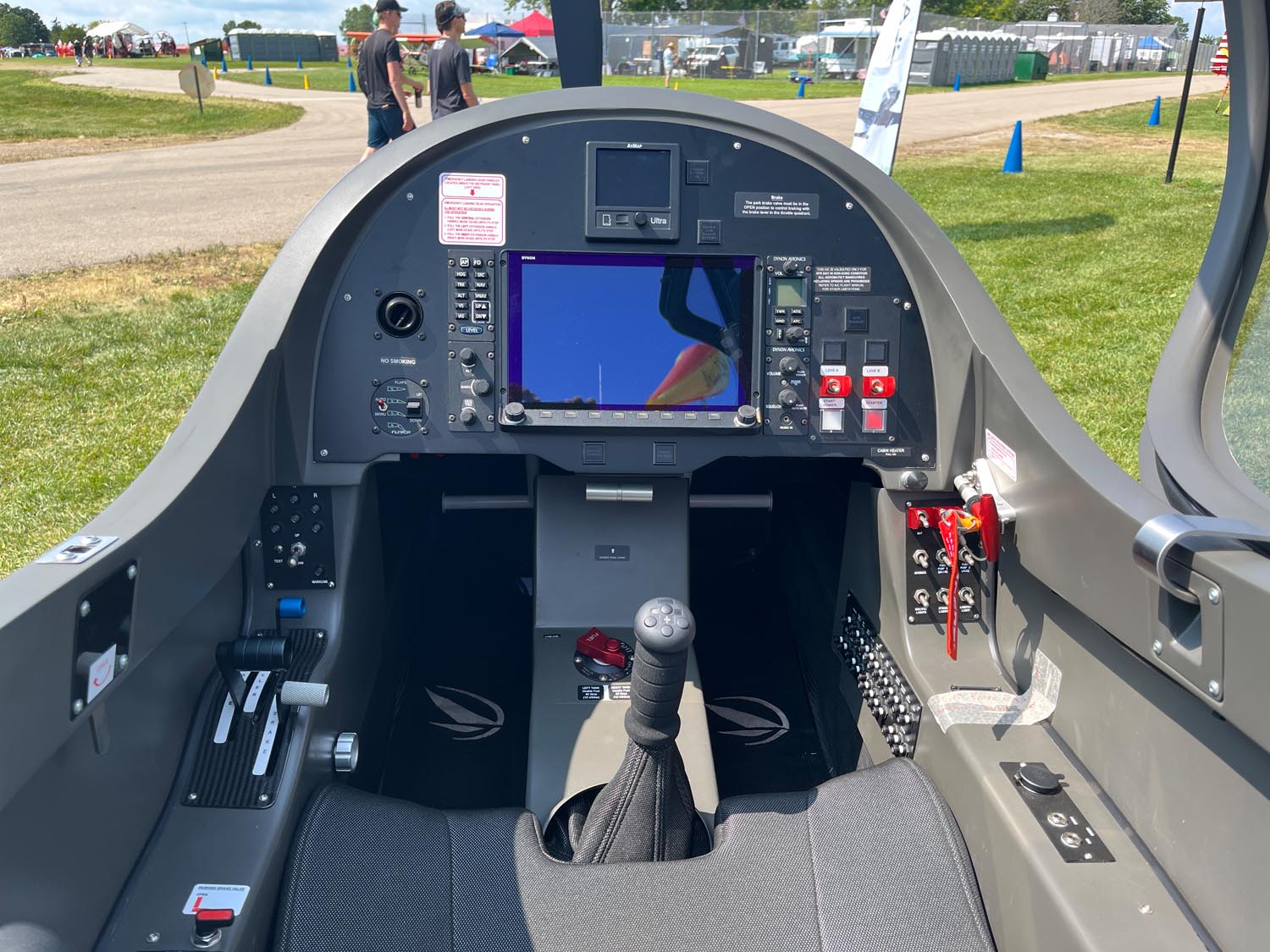
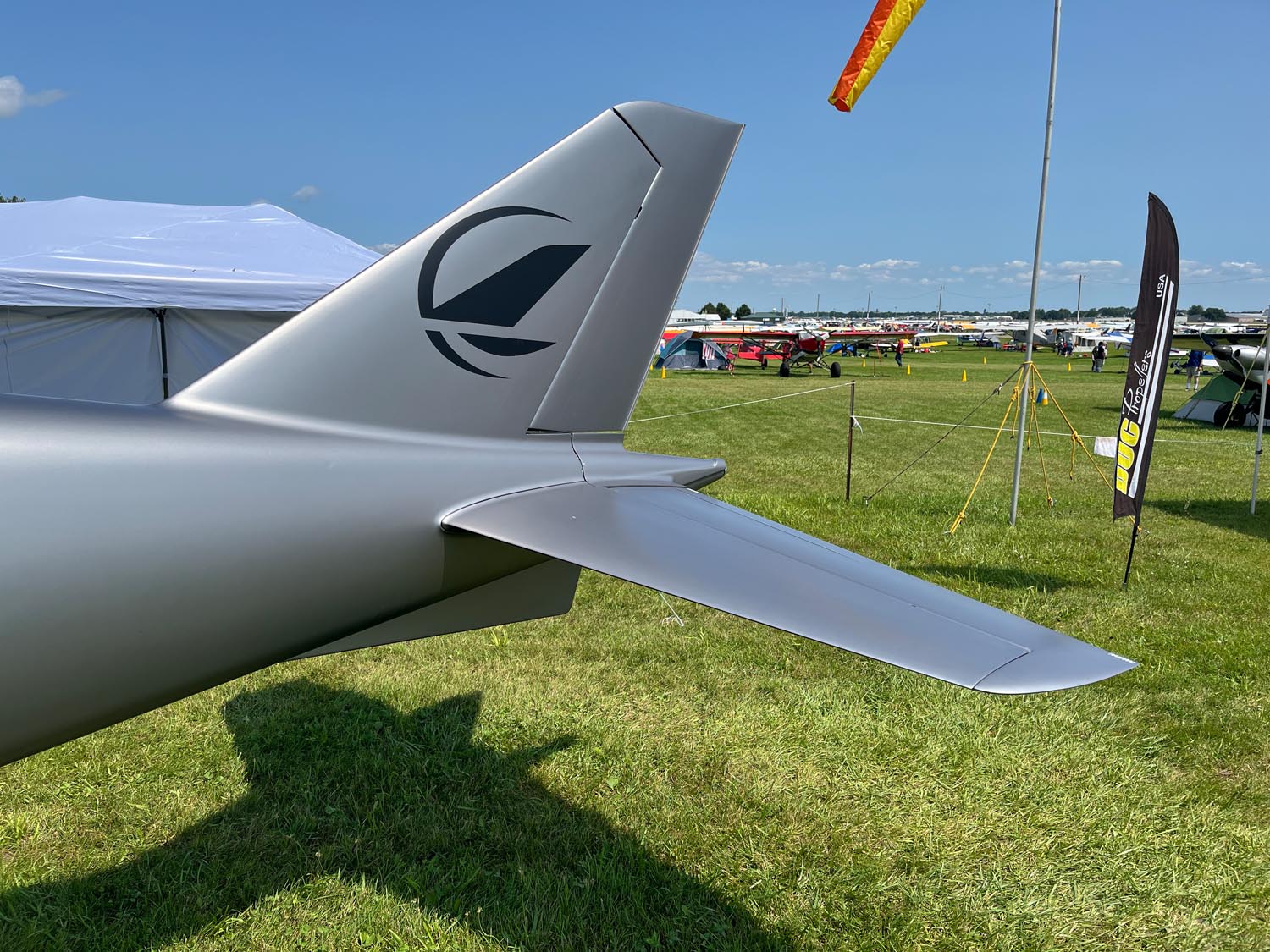
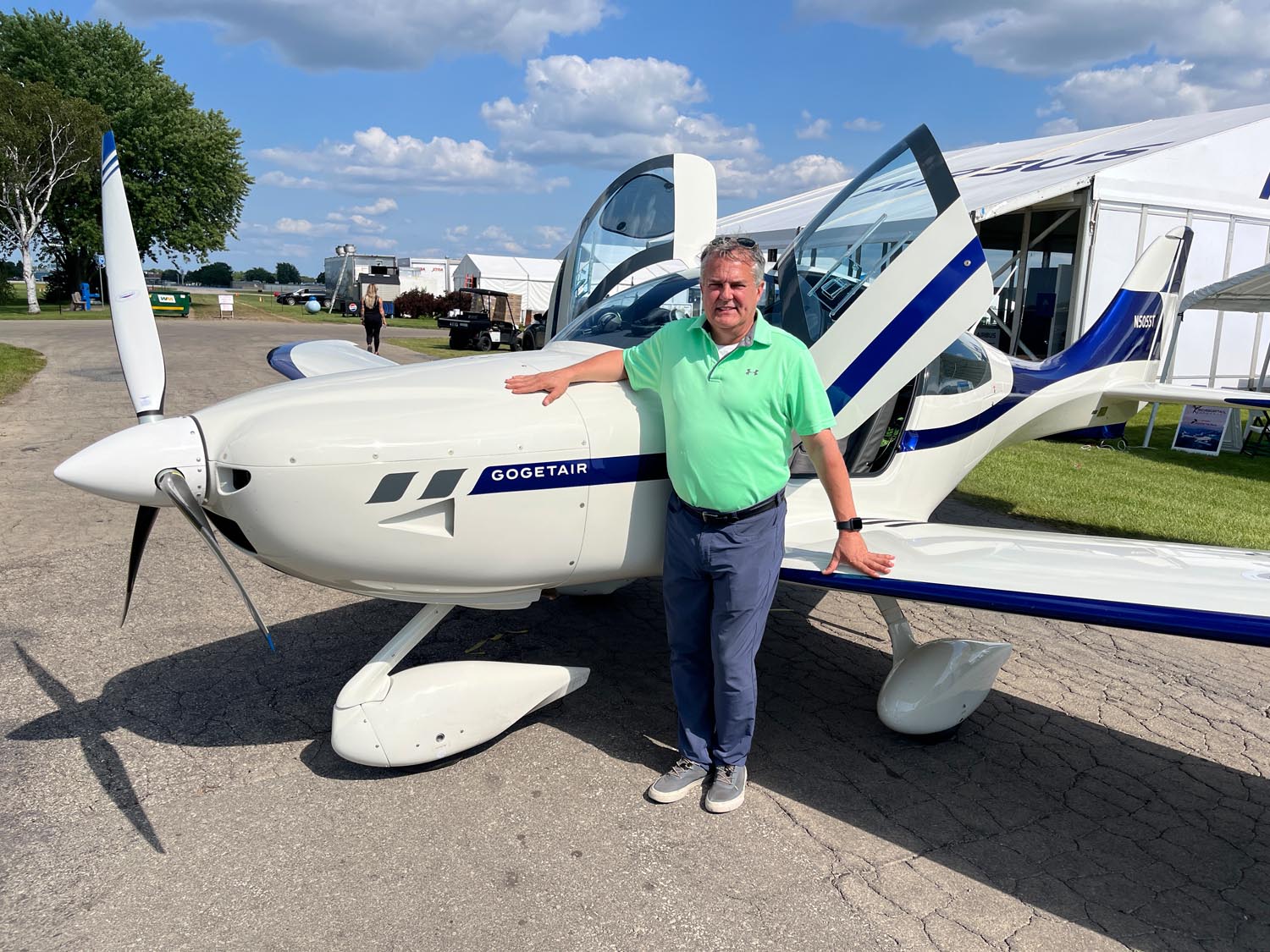
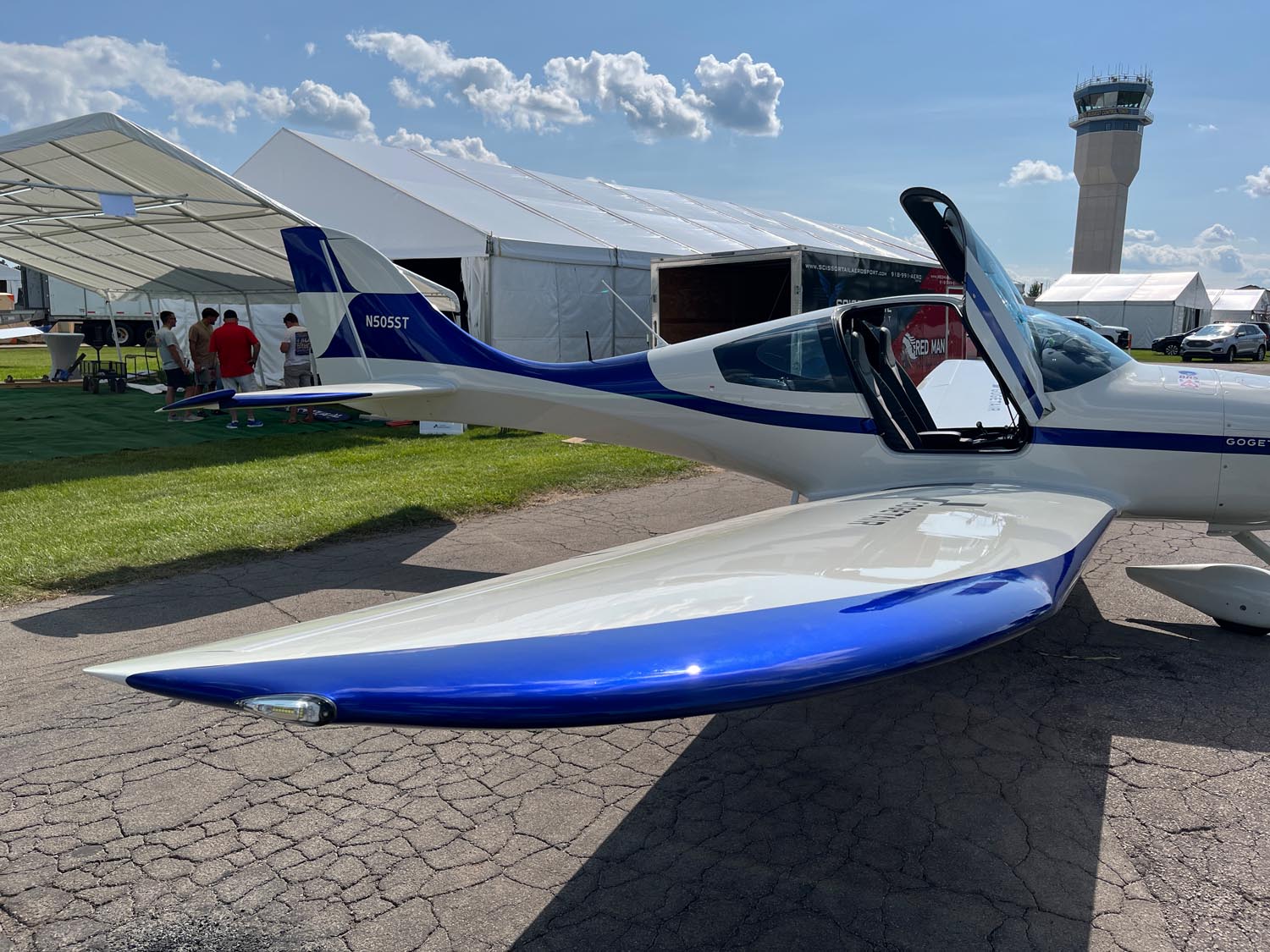
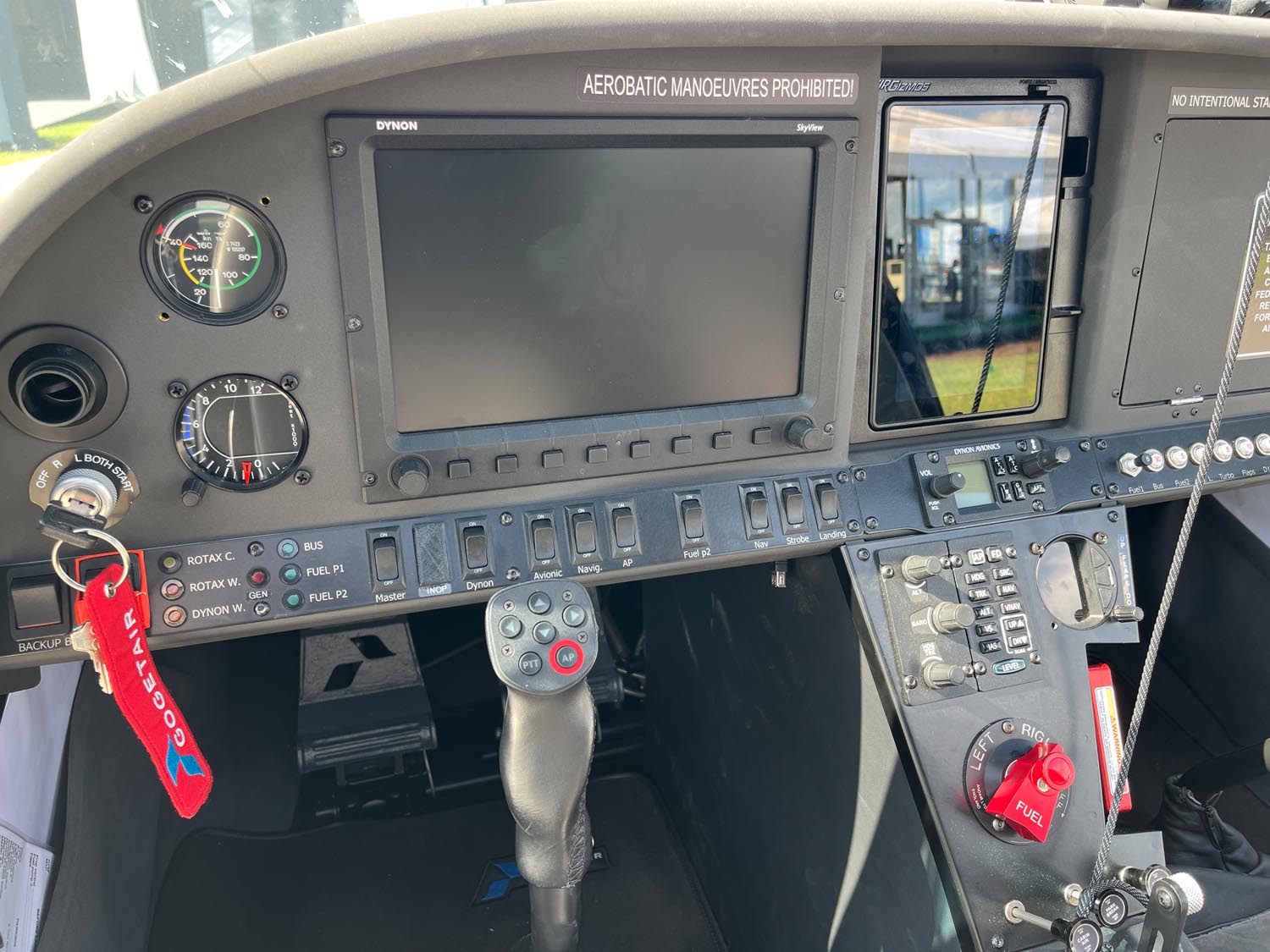








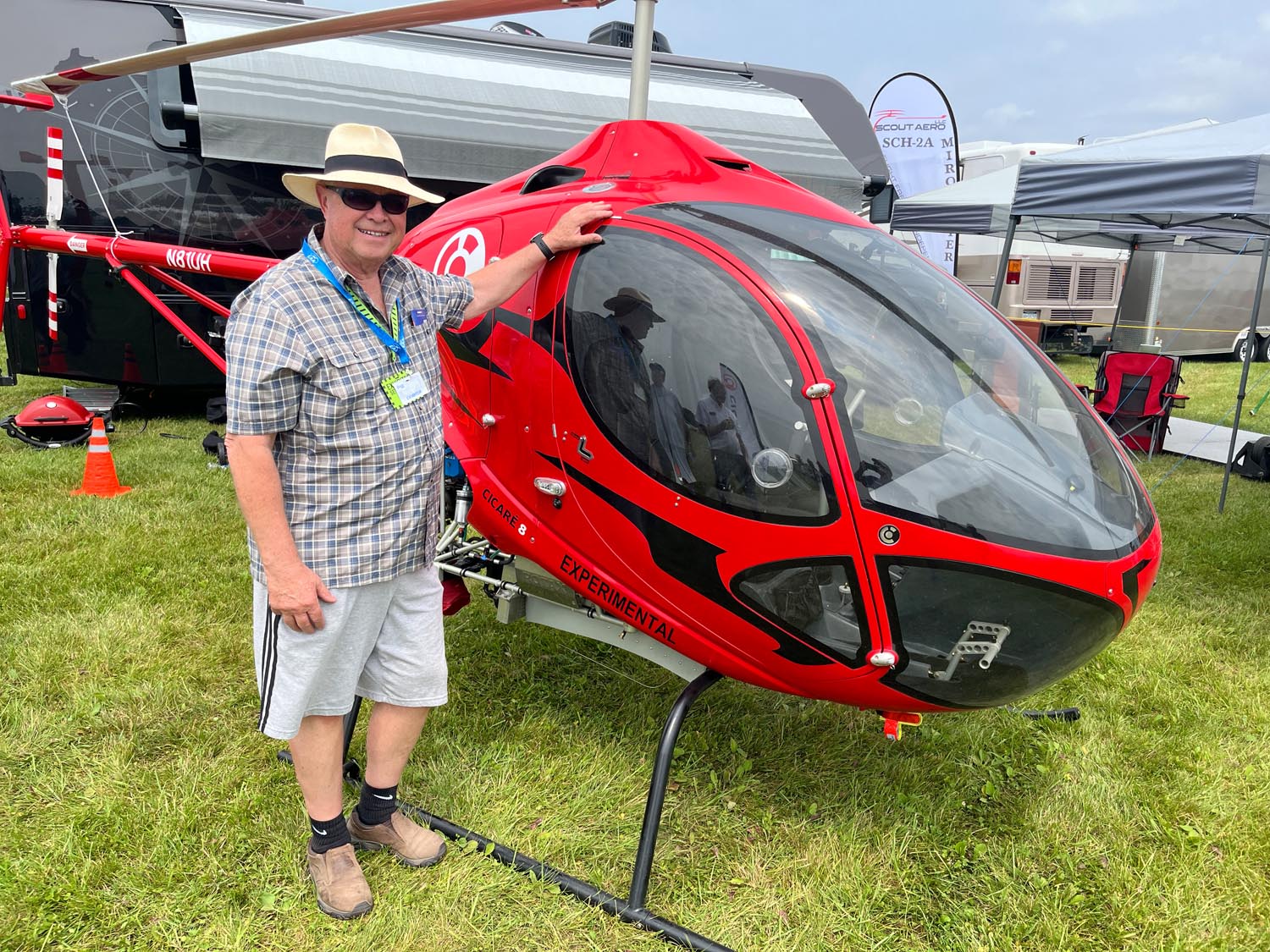
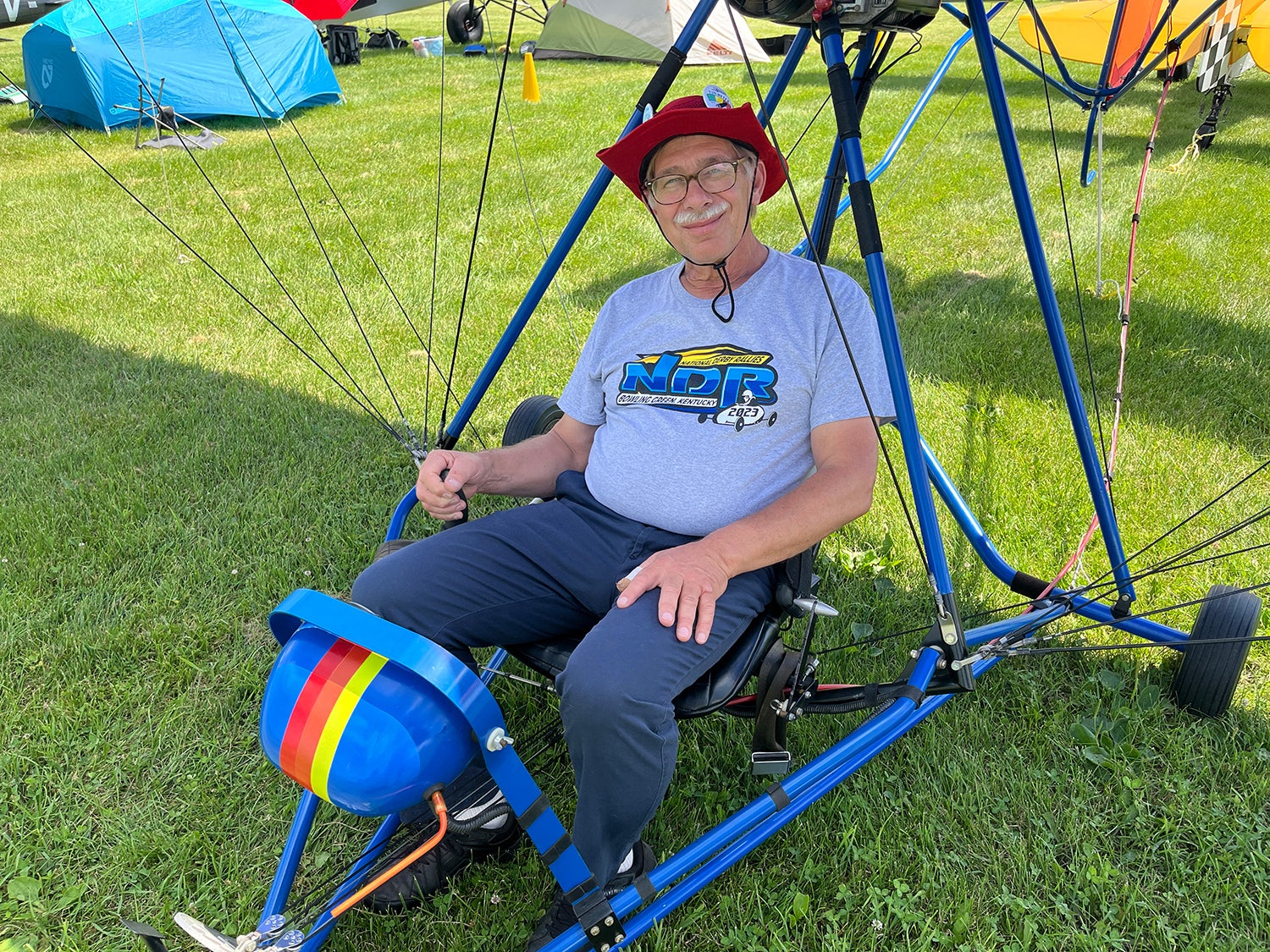
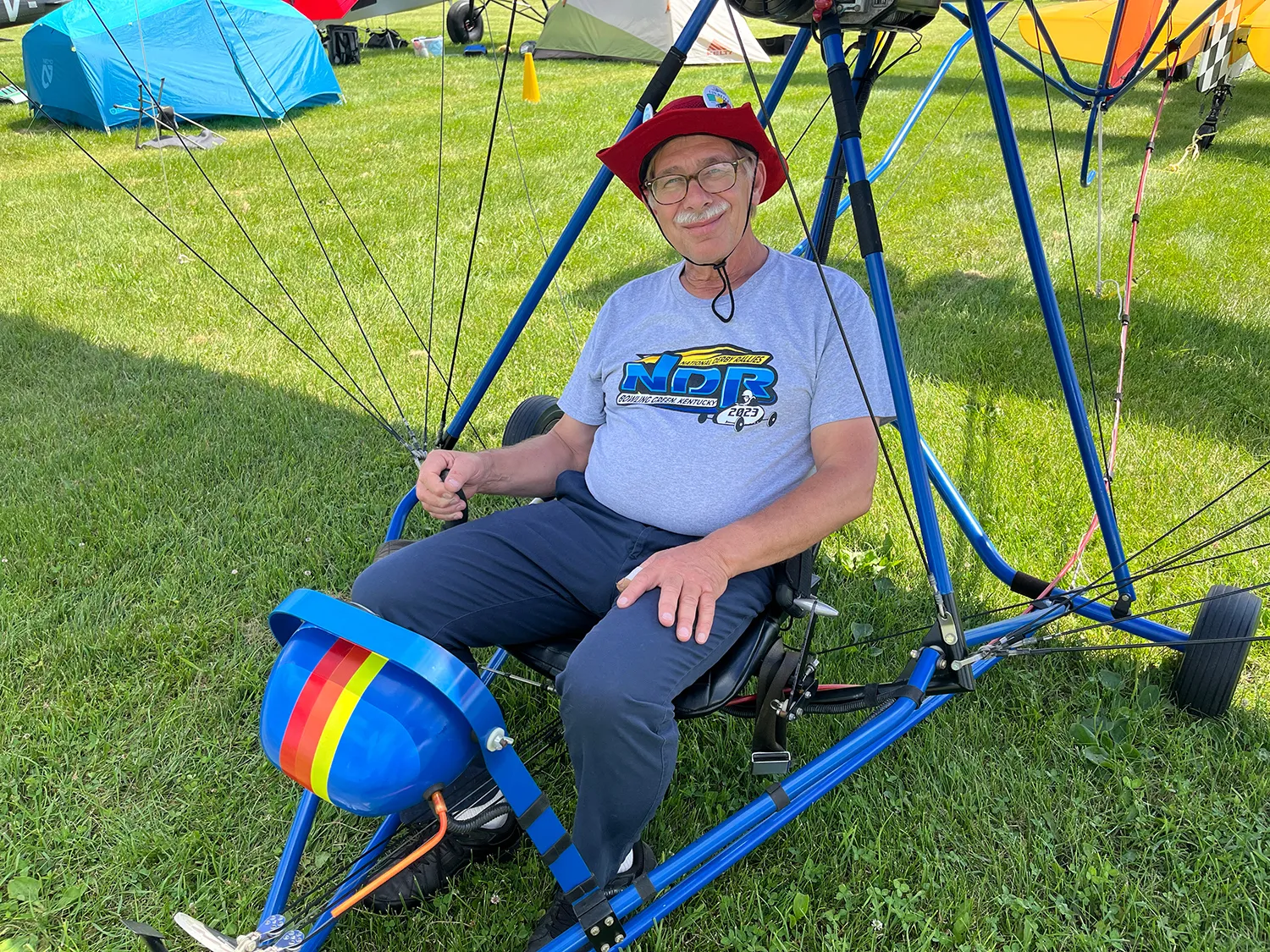
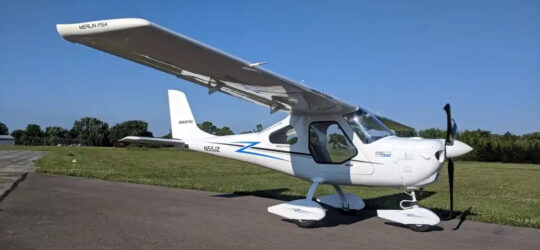 First introduced in Europe in 2013, the all aluminum single seat enclosed cabin Merlin LSA has sported a variety of engines, including a Rotax 582, a specially built four stroke V-twin and even an electric motor. In fact, the Merlin airframe has served as a test bed for all kinds of propulsion and aerodynamic innovations. At AirVenture 2023,
First introduced in Europe in 2013, the all aluminum single seat enclosed cabin Merlin LSA has sported a variety of engines, including a Rotax 582, a specially built four stroke V-twin and even an electric motor. In fact, the Merlin airframe has served as a test bed for all kinds of propulsion and aerodynamic innovations. At AirVenture 2023, 